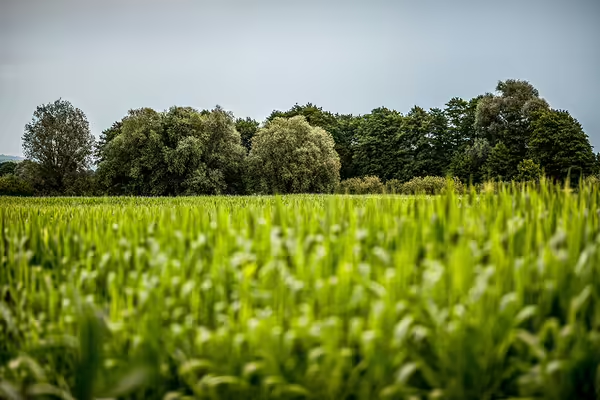
URBANA, Ill. — There’s a longstanding attitude in many farming communities that trees and agriculture don’t mix. But agroforestry — the intentional integration of trees and shrubs in agricultural systems, such as planting trees as windbreaks, integrating trees on pastures, or growing tree crops intercropped with annual crops — can provide a multitude of benefits to both farmers and landscapes. So far, in the U.S. Midwest, these benefits have gone unrealized, with vanishingly small adoption rates.
University of Illinois Urbana-Champaign researchers say strategic plans that integrate environmental, social, and economic considerations are needed to expand agroforestry throughout the Midwest. Their new study in Environmental Research Letters provides a foundation.
“There has been a lot of research on the agronomy and ecology side of agroforestry, including the environmental benefits these practices can offer. But we don't know a lot about the social and economic impacts. It turns out those factors dramatically shift our priorities for targeting agroforestry in certain areas,” said lead study author Sarah Castle, who completed the analysis during her doctoral studies in the Department of Natural Resources and Environmental Sciences (NRES), part of the College of Agricultural, Consumer and Environmental Sciences at Illinois. Castle is now a postdoc at Yale School of the Environment and a visiting scholar at Illinois.
Castle’s goal, along with co-authors Chloe Wardropper, assistant professor in NRES, and Daniel Miller, associate professor at the University of Notre Dame, was to create a tool to target agroforestry where it would provide the greatest environmental benefits while also being economically viable, socially acceptable, and suited to areas where agroforestry-relevant trees are most likely to thrive.
Mapping social attitudes and economic feasibility together with environmental data is no easy task, but the researchers did just that.
Read the full article from the College of ACES.
University of Illinois Extension develops educational programs, extends knowledge, and builds partnerships to support people, communities, and their environments as part of the state's land-grant institution. Extension serves as the leading public outreach effort for University of Illinois Urbana-Champaign and the College of Agricultural, Consumer and Environmental Sciences in all 102 Illinois counties through a network of 27 multi-county units and over 700 staff statewide. Extension’s mission is responsive to eight strategic priorities — community, economy, environment, food and agriculture, health, partnerships, technology and discovery, and workforce excellence — that are served through six program areas — 4-H youth development, agriculture and agribusiness, community and economic development, family and consumer science, integrated health disparities, and natural resources, environment, and energy.